Florence, the capital city of the Tuscany region in Italy, is known for many things, including its outstanding art, Renaissance architecture, and distinguished cultural heritage. One of the most famous landmarks in Florence is the magnificent Duomo Cathedral, with its massive red dome dominating the city’s skyline.
Florence is also renowned for its delectable cuisine, which makes wonderful use of local ingredients and products like olive oil, truffles, and dry Chianti wine from Tuscany.
Florence’s artistic heritage, influenced by legendary artists, writers, and intellectuals, is apparent in the sublime architecture, and many museums and galleries that adorn the city’s streets and squares to this day.
What is Florence famous for? Read on to find out.
Architecture
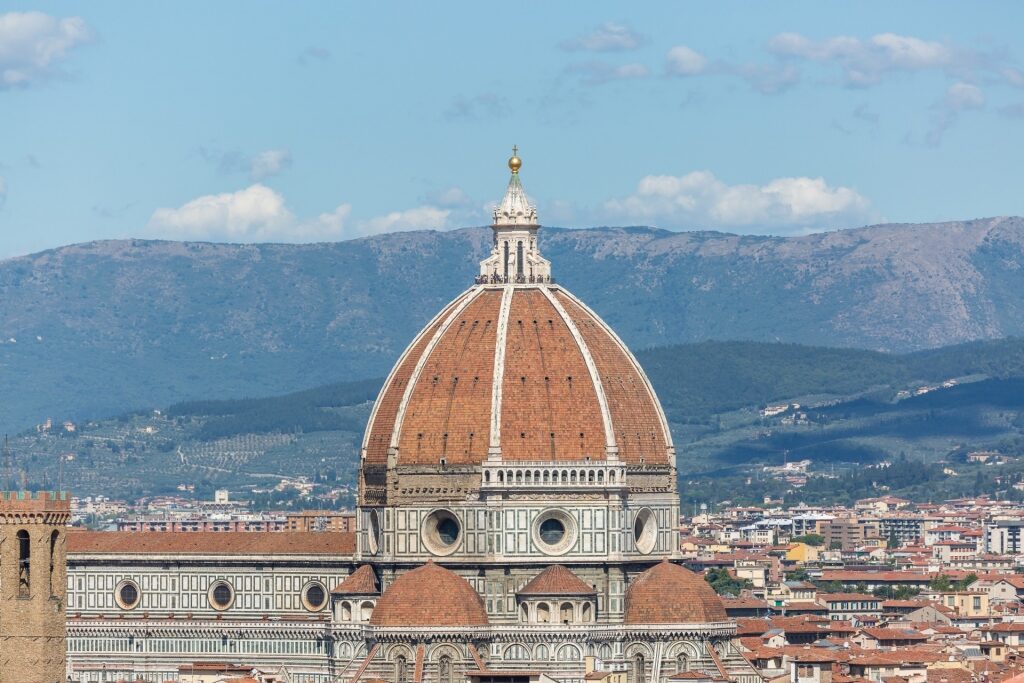
Cattedrale di Santa Maria del Fiore
Florence’s rich art scene and architectural traditions have left an indelible mark on the city’s landscape, with magnificent masterpieces gracing every corner of the Tuscan capital.
The Cattedrale di Santa Maria del Fiore, or the Duomo, exemplifies Florence’s architectural brilliance. The church’s arresting Gothic facade, giant red dome, and intricate marble decorations bear witness to the city’s unwavering commitment to artistic splendor and craftsmanship.
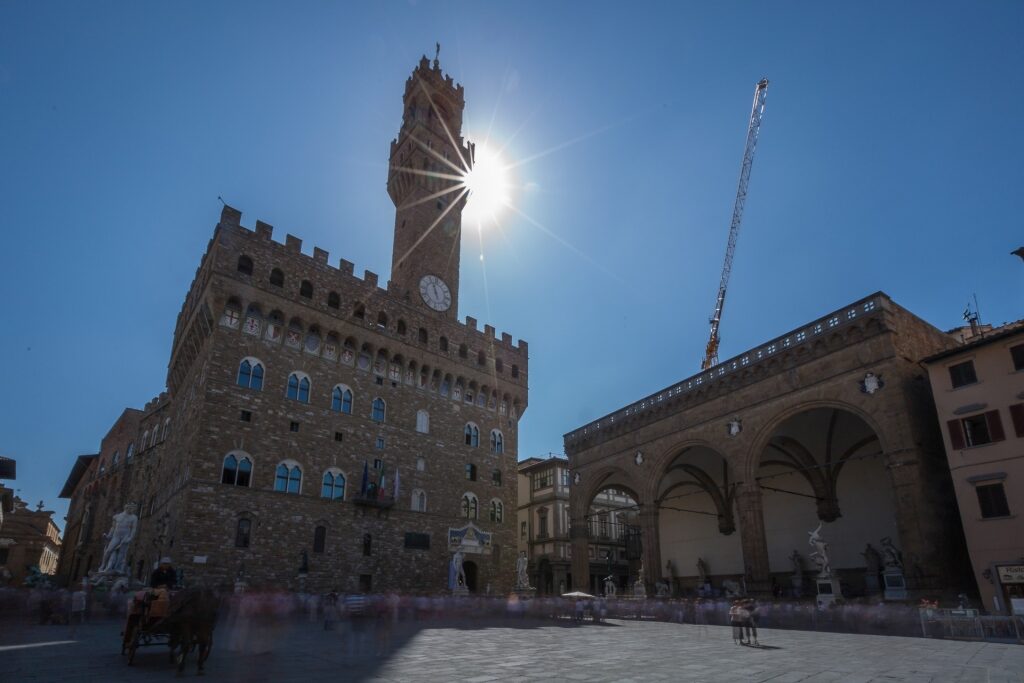
Palazzo Vecchio
Another noteworthy landmark is Palazzo Vecchio, a grand fortress that has been turned into the city’s town hall. The Palazzo Vecchio is home to some dazzling murals, decorative courtyards, and ornate Renaissance chambers, like the fresco-laden Salone dei Cinquecento hall.

Cappelle Medicee
Cappelle Medicee, essentially a part of the San Lorenzo Basilica, is another site steeped in architectural history.
The chapel, built in the 16th century for the Medici family, houses many intricately sculpted works in marble, along with frescoes by legendary artists like Michelangelo, plus a number of ornate Medici tombs.
Giotto’s Campanile is a soaring white bell tower, part of the Duomo and designed by the renowned artist Giotto di Bondone in the 14th century. The Gothic tower will provide you with a stellar view of Florence’s sea of red rooftops—if you choose to take the 414 steps up to the top.
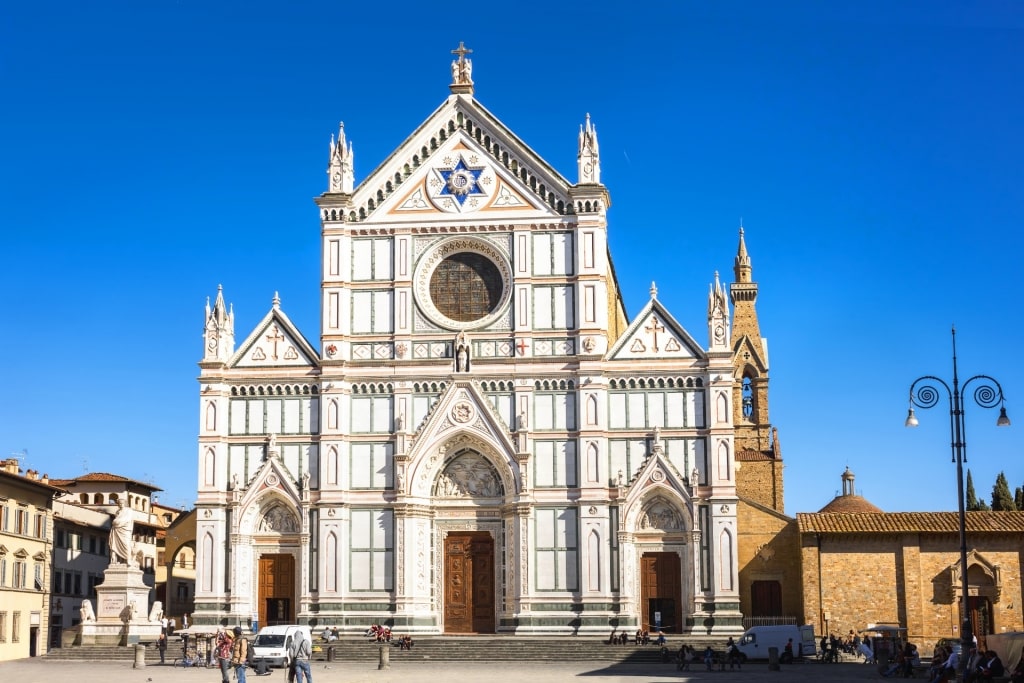
Basilica of Santa Croce
The Basilica of Santa Croce, with its white façade, is a lovely church dating back to the 13th century. While not as grand as the Duomo, this Franciscan church, full of chapels, is a fetching example of Italian Gothic architecture.
The Santa Croce church also happens to be the final resting place of many distinguished figures, including Michelangelo, Galileo, and Niccolo Machiavelli—although the latter had a somewhat darker reputation than his fellow interred Italians.
Cultural Traditions
One of Florence’s more unique cultural customs is the intense “Calcio Storico” football matches, which date back to the middle ages.
Held yearly in Piazza Santa Croce, these matches involve neighborhood teams playing a violent sport similar to rugby, but with fist fights and chokeholds allowed. If you’re a fan of team sports and mixed martial arts, these bouts should be right up your alley.
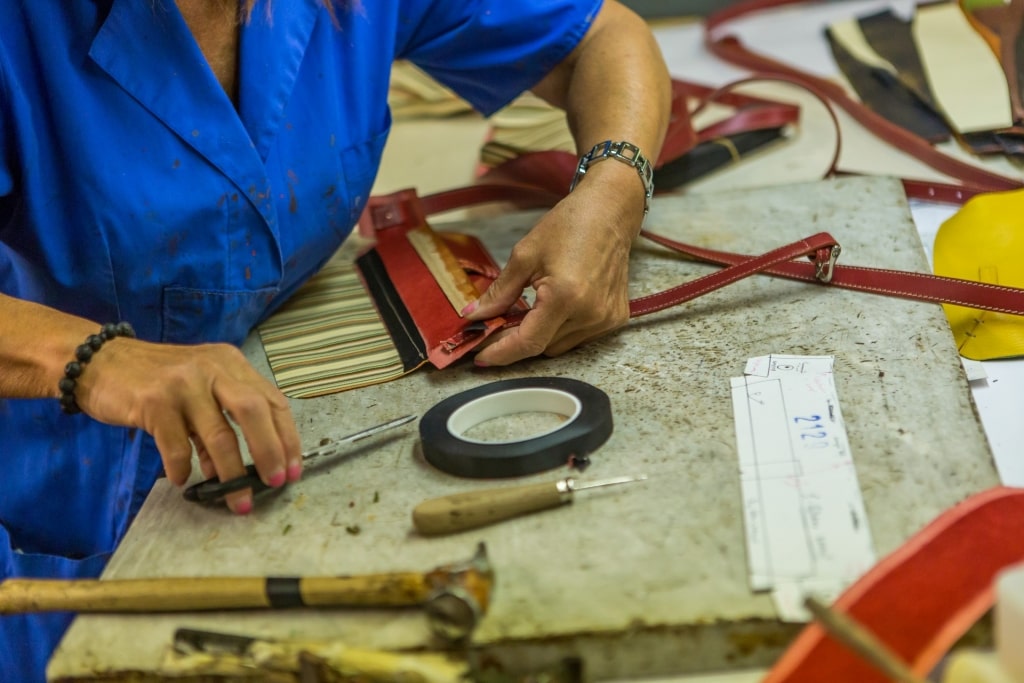
Leather factory in Florence
The beautiful Italian city also has a long cultural tradition of skilled leather workmanship. Artisans have been fashioning high-quality leather items, including bags, belts, shoes, jackets, and more, here for centuries.
If you’re interested in handmade leather merchandise, Florence, particularly the San Lorenzo Market, is one of the top destinations in Europe for leather goods. For fashion history, visit the Ferragamo Museum and the Gucci Museum.
The Ponte Vecchio
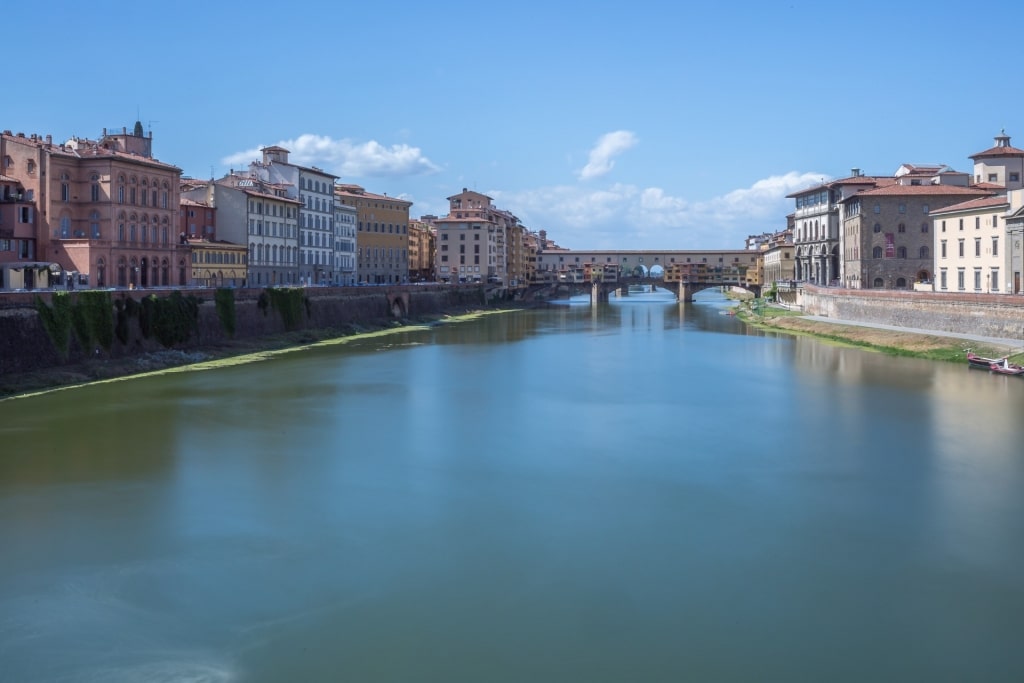
Ponte Vecchio
Ponte Vecchio, a historic bridge, is synonymous with Florence for many visitors. Meaning “old bridge” in Italian, Ponte Vecchio is a covered span with medieval origins.
This Florentine bridge, spanning the Arno River, has witnessed centuries of tumultuous history, including floods, wars, and social upheaval since its first incarnation. Ponte Vecchio, built out of stone, first came into being during the 10th century.
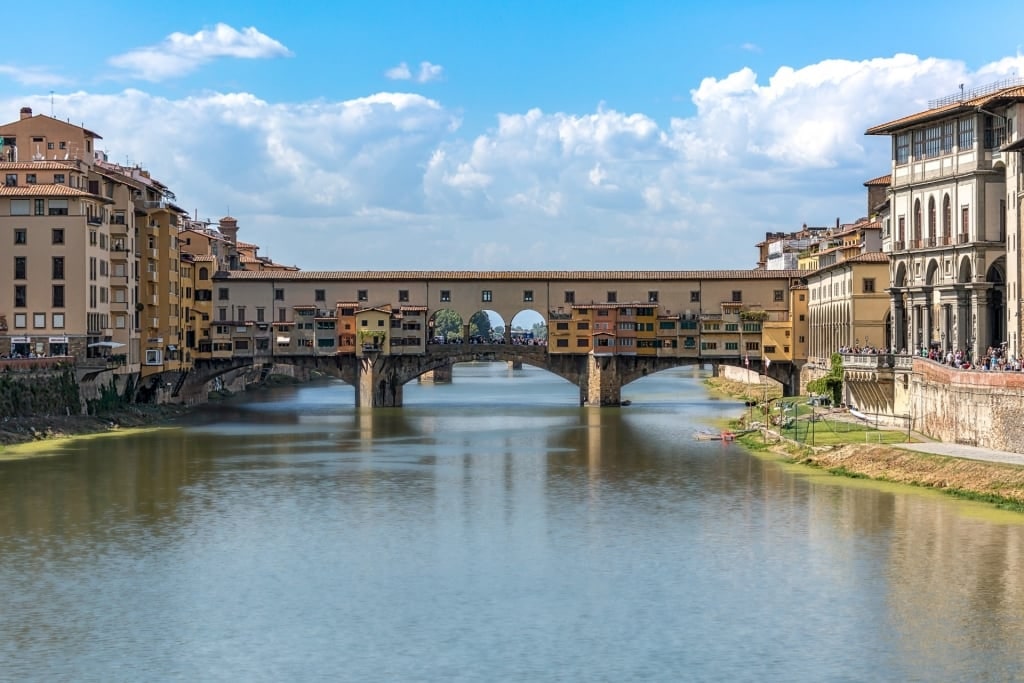
Ponte Vecchio
Originally housing shops for butchers and tanners, the picturesque bridge has undergone numerous reconstructions and upgrades over time. Today, it’s adorned with small shops selling artwork, jewelry, and souvenirs.
Read: Two Days in Florence
Florentine Cuisine
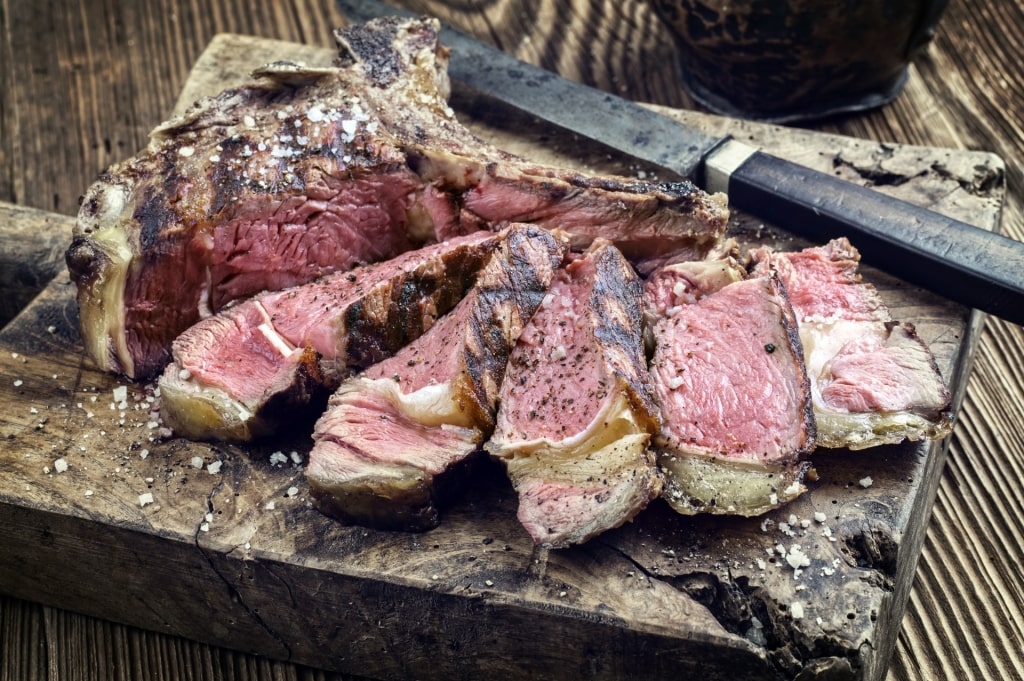
Bistecca alla Fiorentina
As with other regions in Italy, Florence has its own culinary heritage which, with all of its delicious flavors, should leave you feeling more than satisfied.
If you’re a meat lover, you’ll want to try the grilled bistecca alla Fiorentina (a cut of steak), made from the prized white Chianina breed of cattle, and typically served rare.
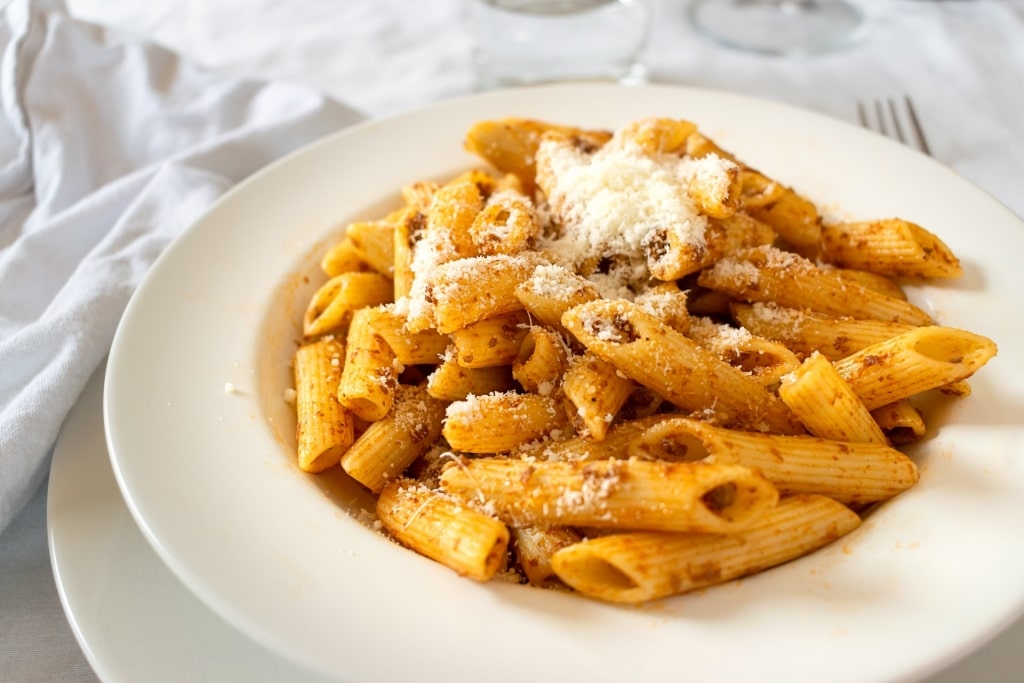
Penne strascicate
Among the best food in Florence is the slow-cooked ragù alla Fiorentina, made with tomatoes and pork.
For pasta lovers, penne strascicate should make your list of dishes to sample while you’re in town. This dish usually features al dente penne pasta, Parmigiano Reggiano cheese, and a flavorful Tuscan meat sauce made with ground beef, sausages, and other ingredients.
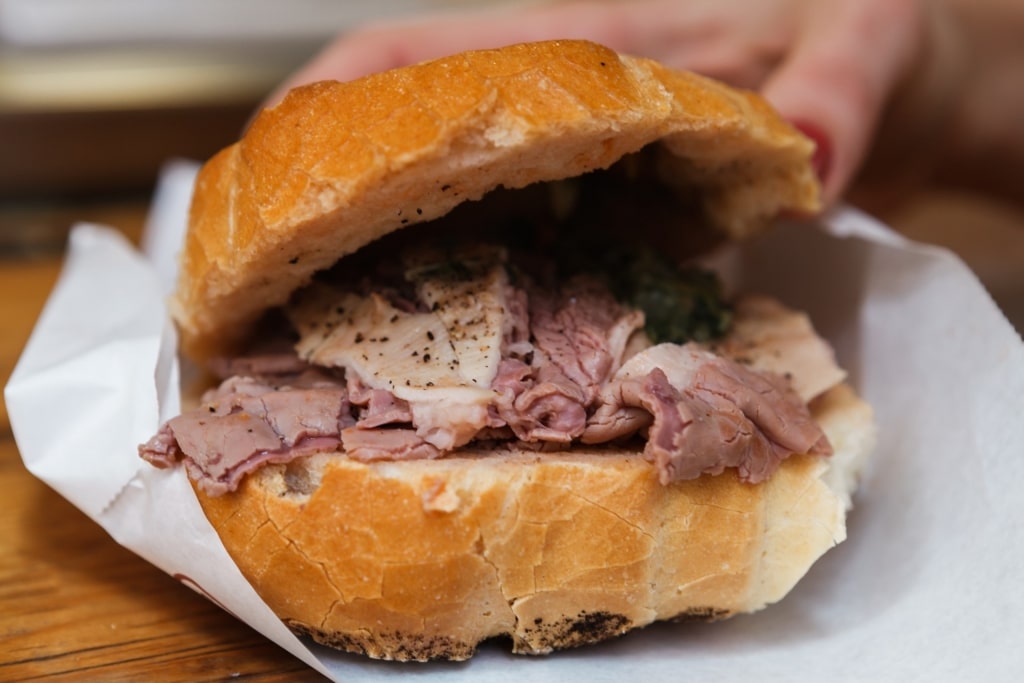
Lampredotto
If you’re not too squeamish, why not give lampredotto a go? This popular Tuscan dish is a meaty sandwich made from a very specific part of the cow, the fourth, and the last bovine stomach (the abomasum), usually cooked with tomatoes until tender.
Florence is also on the culinary map thanks to its Chianti wine production, with the region offering a wide selection of savory dry reds for wine enthusiasts to relish year-round.
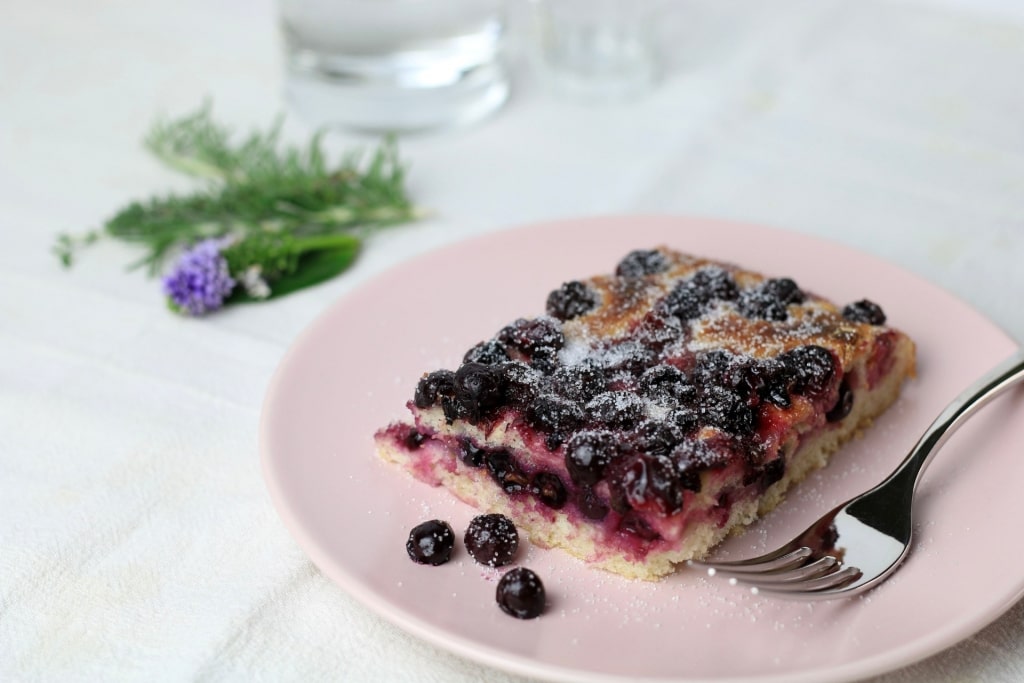
Schiacciata all’uva
If you have a sweet tooth, schiacciata all’uva, which features juicy grapes baked between two pieces of focaccia bread, is a must. And of course, indulging in artisanal Italian gelato, available at places like Vivoli Gelato, is always a delightful treat that will put a smile on your face.
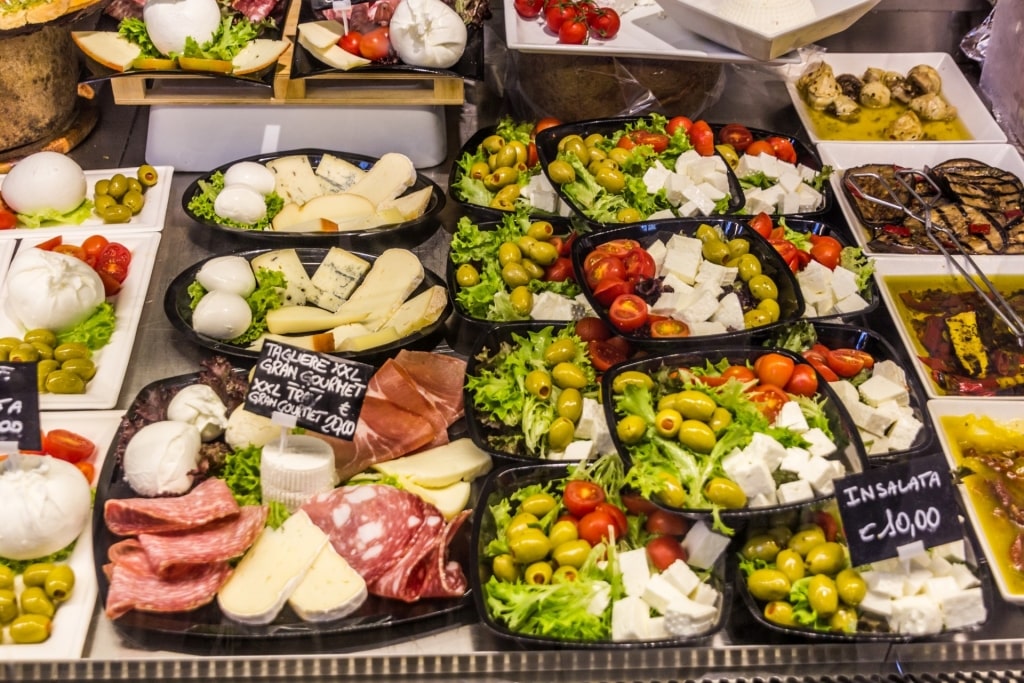
Mercato Centrale
To enjoy some excellent coffee, biscotti, and sweets, visit the historical Caffé Gilli in Piazza della Repubblica.
For a lively culinary experience, head to the Mercato Centrale near Piazza San Lorenzo, one of the best markets in Italy. Here, you can savor a variety of dishes at food stalls, immerse yourself in the vibrant atmosphere of an Italian covered market, and soak up the spirit of Florence.
Piazzale Michelangelo
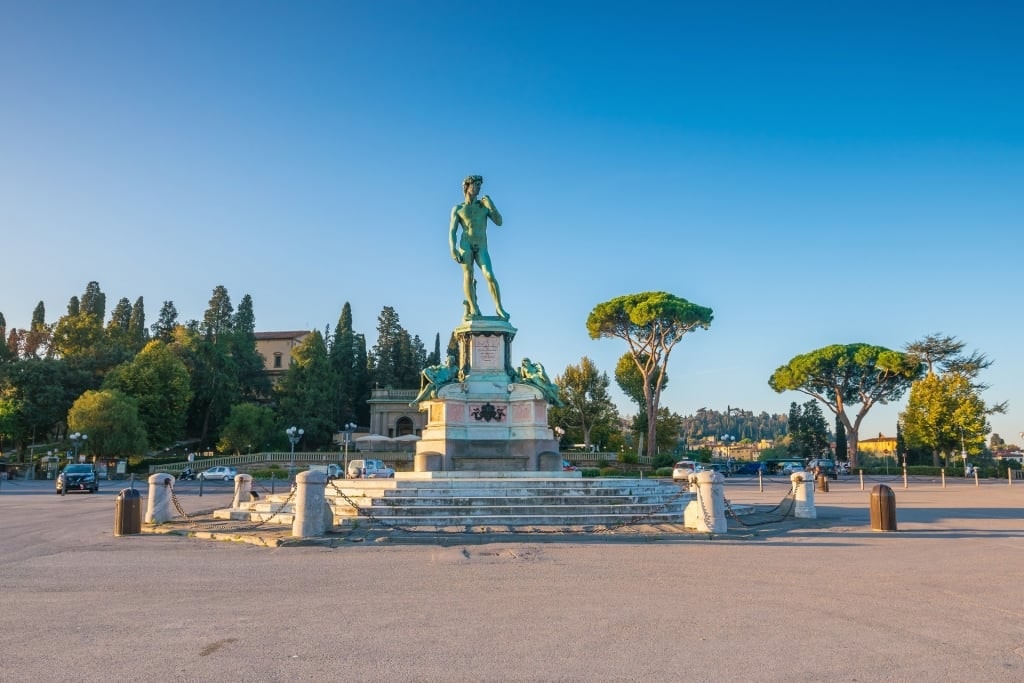
Piazzale Michelangelo
For breathtaking panoramic views of Florence’s red rooftops, the Piazzale Michelangelo just can’t be beaten.
Located on a hill south of the city center and the Arno River, this vantage point offers stunning vistas of iconic landmarks like the Cattedrale di Santa Maria del Fiore, Palazzo Vecchio, and Ponte Vecchio, making it an ideal spot for taking in the city’s skyline.
You’ll also come across an outdoor bronze replica of Michelangelo’s iconic David here, too.
Galleries & Museums
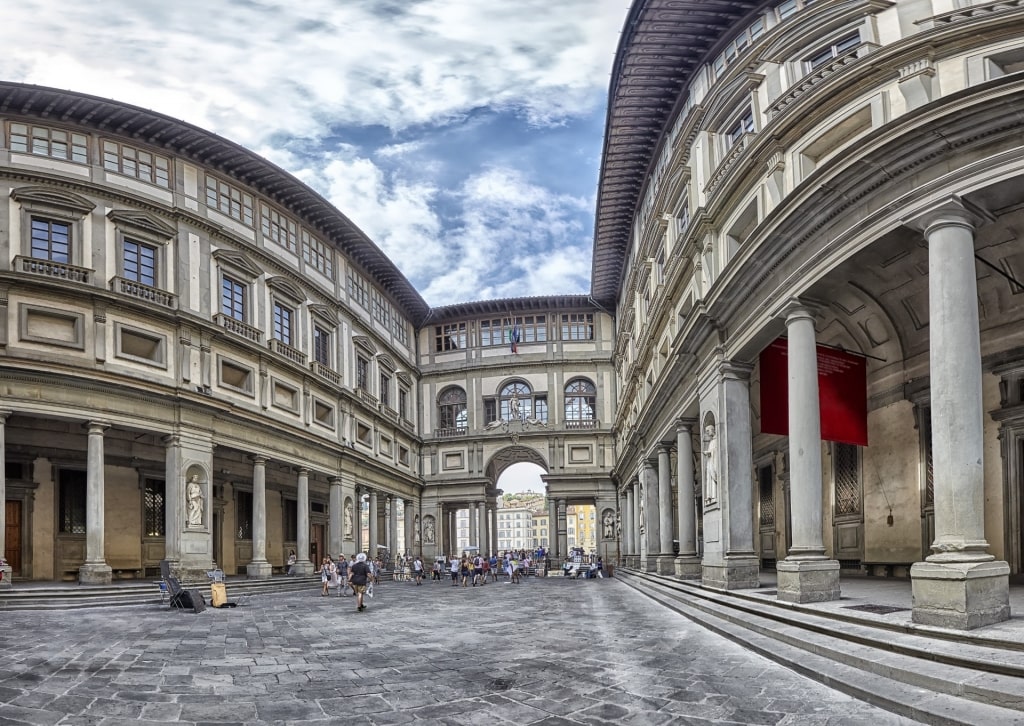
Uffizi Gallery
As one of the best cities for art in the world, Florence is famed for its exceptional galleries, which house an impressive collection of Renaissance-era masterpieces that have shaped the history of art over the centuries.
The Uffizi Gallery is perhaps the most well-known name among the city’s art spaces. A tour through the museum will bring you face-to-face with some of the greatest artworks ever created.
Some of the best art you can view here includes Botticelli’s The Birth of Venus, with the goddess Venus emerging from a giant seashell, Medusa by Caravaggio, depicting the horrifying Medusa with her snake-entwined hair, Leonardo da Vinci’s Annunciation, featuring the Virgin Mary and the archangel Gabriel, and the Holy Family by Michelangelo.
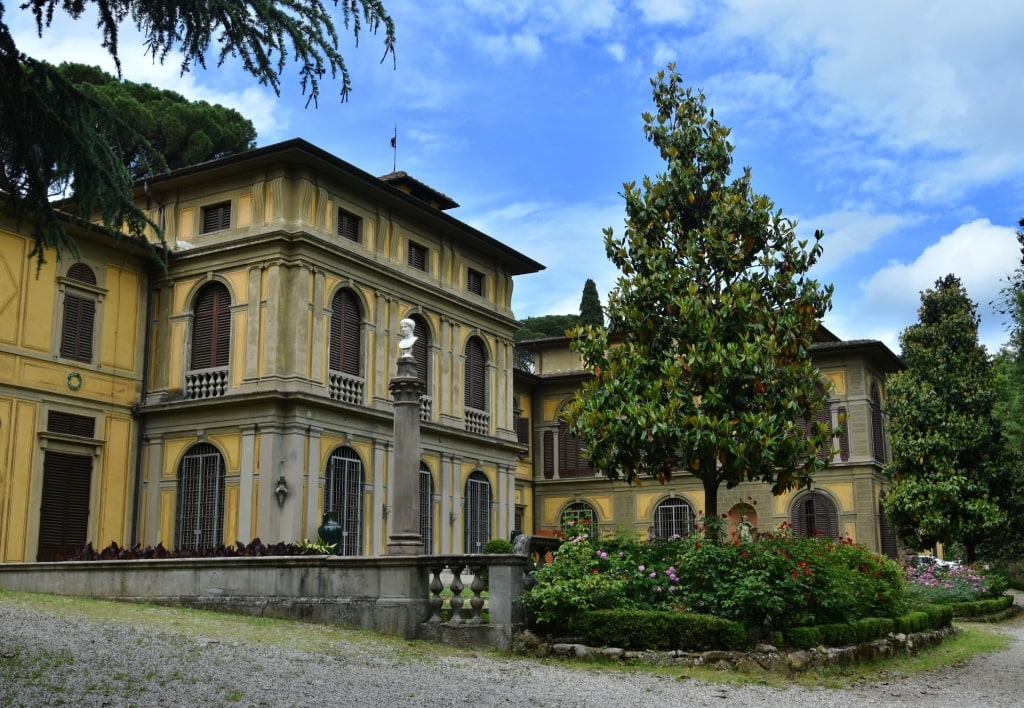
Museo Stibbert
The Museo Stibbert, located on a hill a few miles from the center, showcases what was once the private collection of Frederick Stibbert, with medieval armaments and weaponry from around the planet (European, Islamic, Japanese armor, and more) on display.
In addition to its notable collection of war artifacts, the Museo Stibbert also features a sizable collection of furniture, paintings, and decorative arts.
You can enjoy the peaceful Stibbert Museum Garden after a tour through the building, or explore the nearby Giardino dell’Orticoltura botanical garden and greenhouse, which will offer you a serene escape from the bustling city.
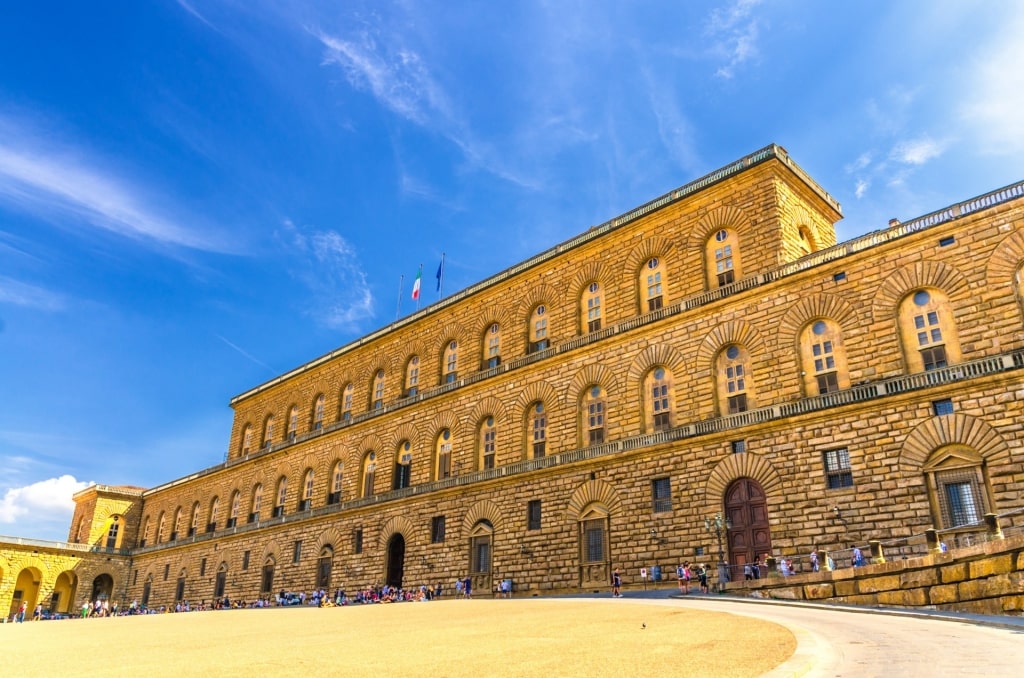
Pitti Palace
The Pitti Palace is yet another locale you can add to your Florence itinerary if you’re an art lover. The building itself is a sprawling edifice, with an extensive collection of Renaissance and Baroque art, plus many Renaissance sculptures inside.
Masterpieces by artists like Caravaggio, Raphael, Rubens, and Titian are housed in the Pitti Palace. Make sure you visit the Palatine Gallery during your visit, where you can marvel at works by Botticelli, Raphael, Tintoretto, and other legendary artists.
Michelangelo’s David
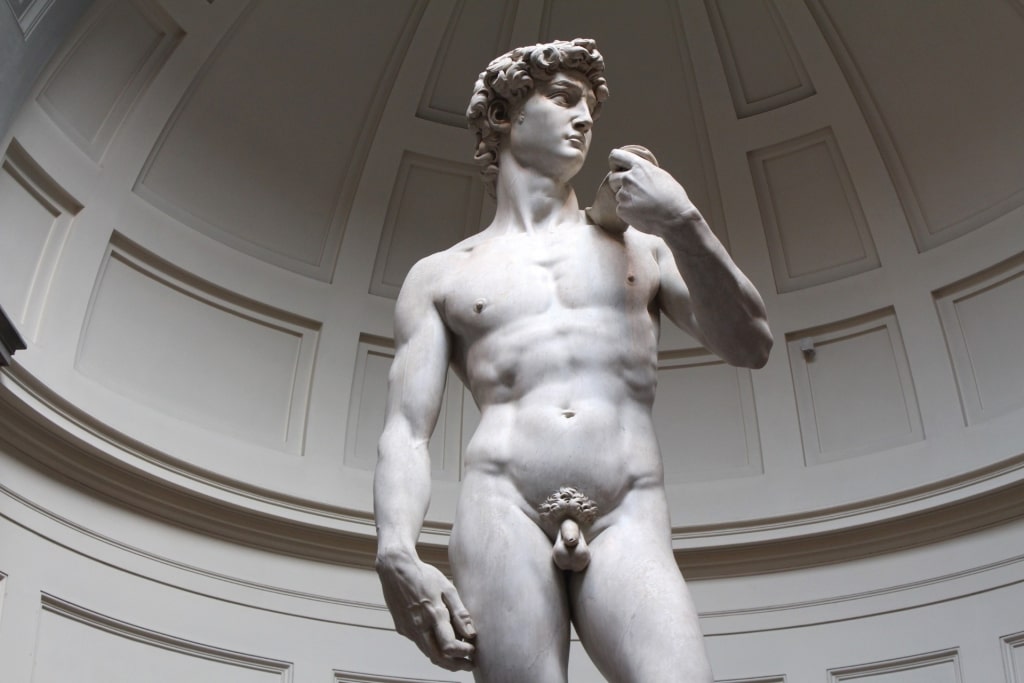
David
What is Florence known for? Probably above all, Michelangelo’s unparalleled sculpture of David, which he carved out of a single block of marble during the early 1500s. The statue is housed today in the Galleria dell’Accademia, and should be seen up close for its sheer beauty.
The Accademia Gallery is also home to a remarkable collection of masterpieces besides David, including other works by Michelangelo, like his unfinished Prisoners sculptures, also referred to by the title Slaves.
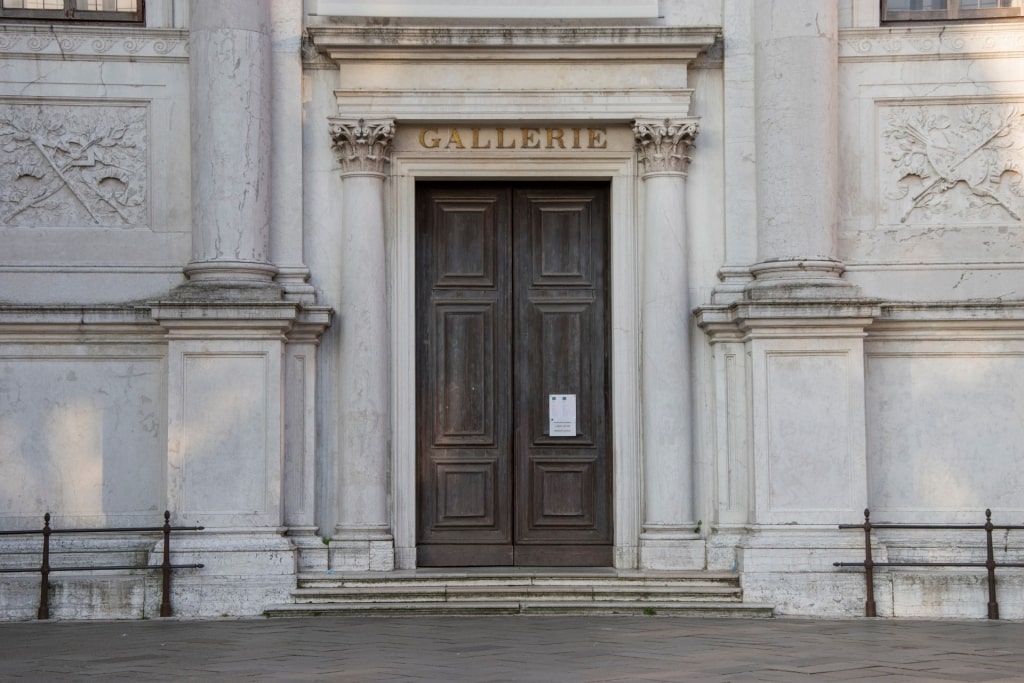
Galleria dell’Accademia
Inside the Galleria dell’Accademia, you’ll find exquisite sculptures by artists such as Giambologna and Bartolomeo Ammannati as well.
You can explore Florence’s Museum of Musical Instruments here too, adding yet another layer of cultural discovery to this culturally rich institution.
The Boboli Gardens
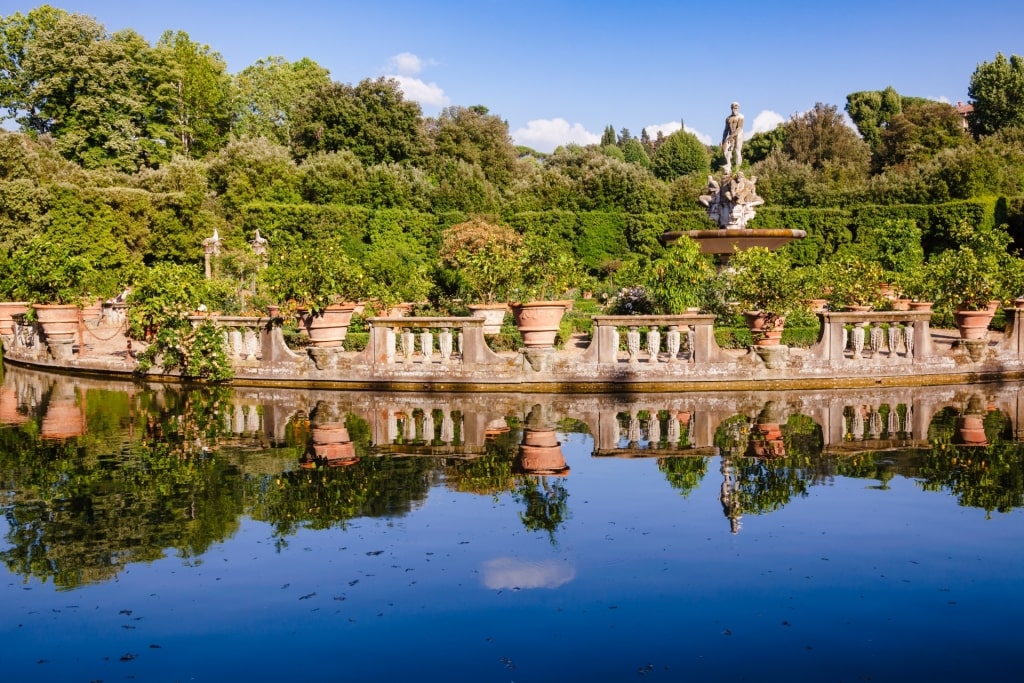
Boboli Gardens
Florence’s Boboli Gardens will offer you a blend of art, open spaces, and sunlight. Located just south of the center, these former Medici gardens feature beautiful walkways adorned with greenery, flowers, grottos, sculptures, and fountains.
Among some of the highlights you can take in during your walks through these Italian gardens are sculptures by Bartolomeo Ammannati, Giambologna (including the elegant Fountain of the Ocean), and other artists, which add to the appeal of this leafy destination.
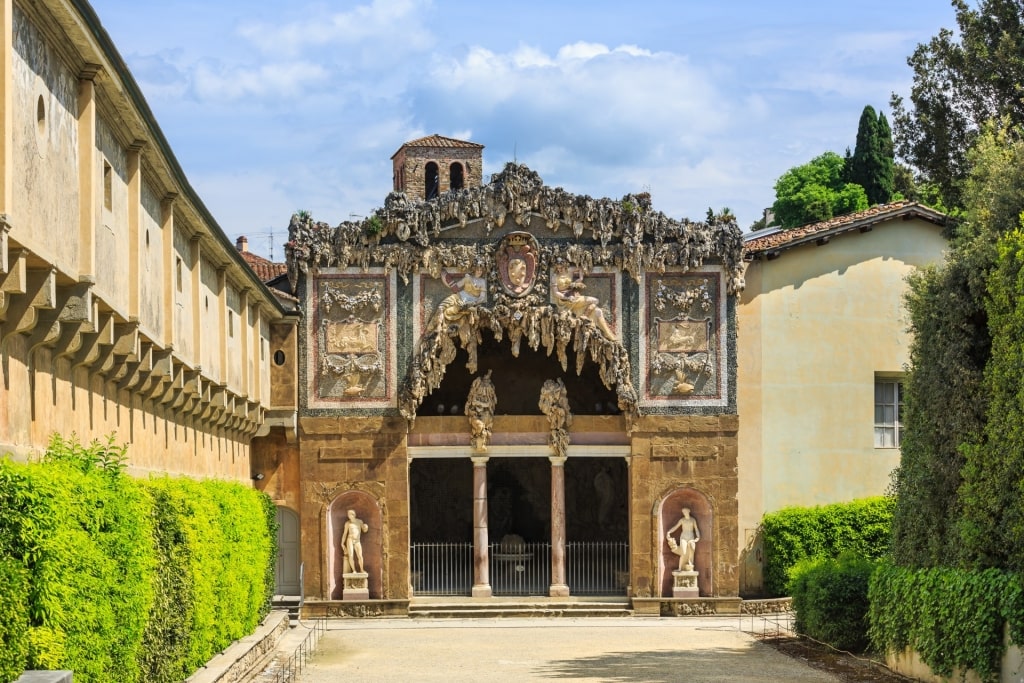
Grotta del Buontalenti
While visiting Boboli Gardens, be sure to see the Grotta del Buontalenti and admire the artificial stalactites and stalagmites inside. You can also relax at the Kaffeehaus, an ornate building that serves food and drink, and enjoy panoramic views of the gardens from its pavilion and terrace.
Barchetti River Boats
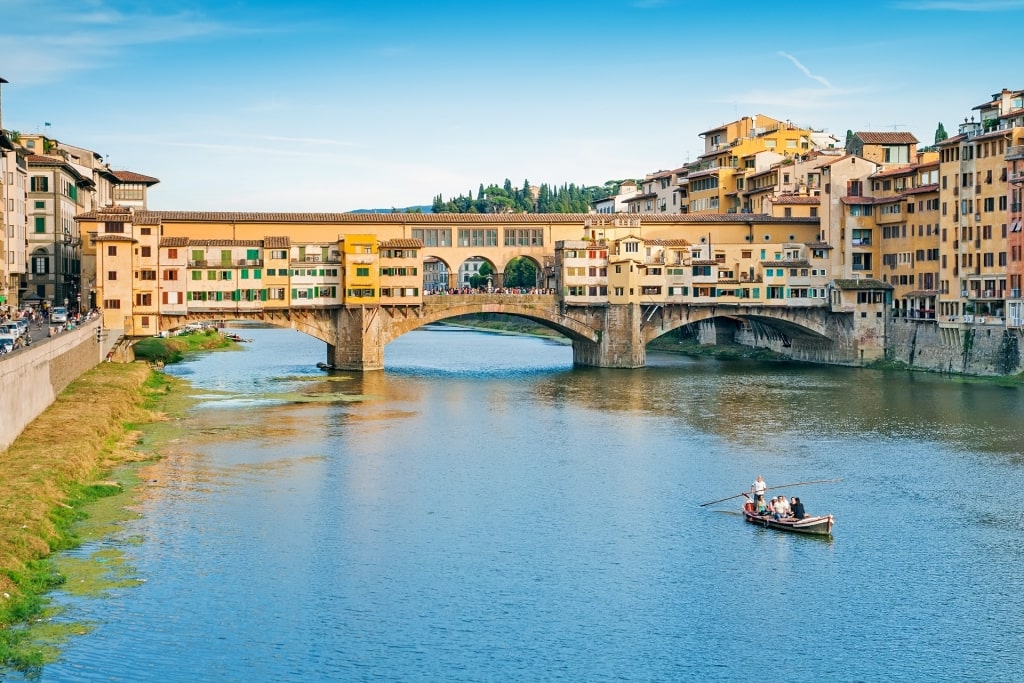
Ponte Vecchio
Another way to experience Florence’s architectural grandeur is by booking a Barchetti riverboat tour on the Arno River.
These flat-bottomed boats, similar to Venice’s gondolas, will glide past iconic landmarks like Ponte Vecchio, Uffizi Gallery, and Palazzo Pitti, as well as the Florentine Baroque Palazzo Corsini, which faces the river.
With a knowledgeable guide piloting your boat, you’ll be able to pick up some fascinating tidbits and historical facts about this ancient city while you enjoy the lovely river and city views.
Leonardo Da Vinci
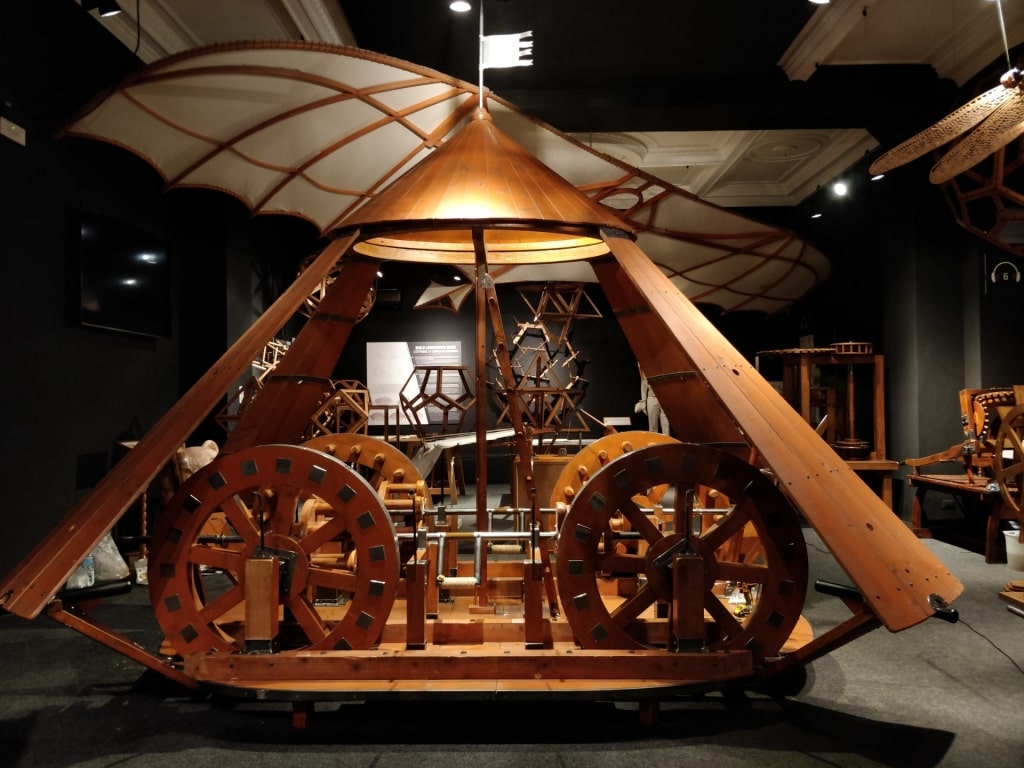
Leonardo Interactive Museum Photo by LeonardoInteractiveMuseum on Wikimedia Commons, licensed under CC BY-SA 4.0
The great Leonardo da Vinci spent several periods of his life in Florence and the Leonardo Interactive Museum, in the city center, pays respect to his genius. What makes this Florentine museum special is its immersive approach to entertaining and educating its guests.
Step inside the museum to witness the wonders of Leonardo da Vinci’s inventions and techniques brought to life through hands-on exhibits, multimedia displays, and interactive activities.
As you “play” inside the mind of da Vinci, you’ll see life-sized replicas of his iconic flying machines, and get to explore his artwork and anatomy studies.
While the machines won’t fly, the museum’s immersive experiences make it an enjoyable Florence attraction, which should definitely make your bucket list of things to see and do here.
Read: Best Beaches in Tuscany
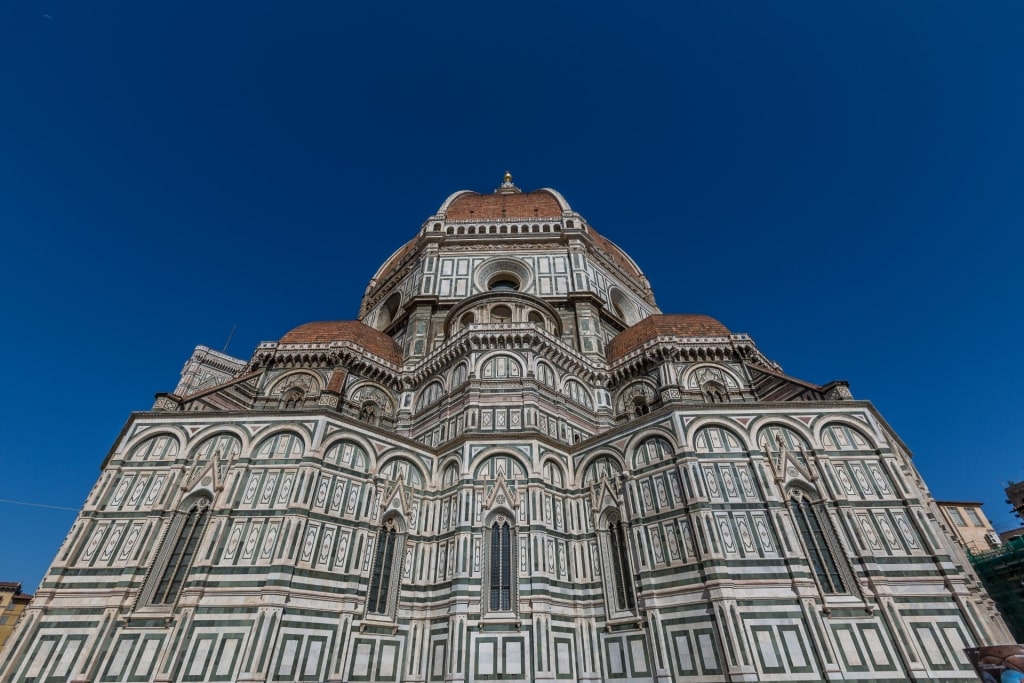
Cattedrale di Santa Maria del Fiore
Discover Florence’s wonderful art, architecture, and cultural roots on one of Celebrity Cruises’ voyages to Italy. Browse our Florence cruises and prepare to immerse yourself in the birthplace of the Renaissance.


